The Article
120x Turntable From Audio-Technica
28th May 2021
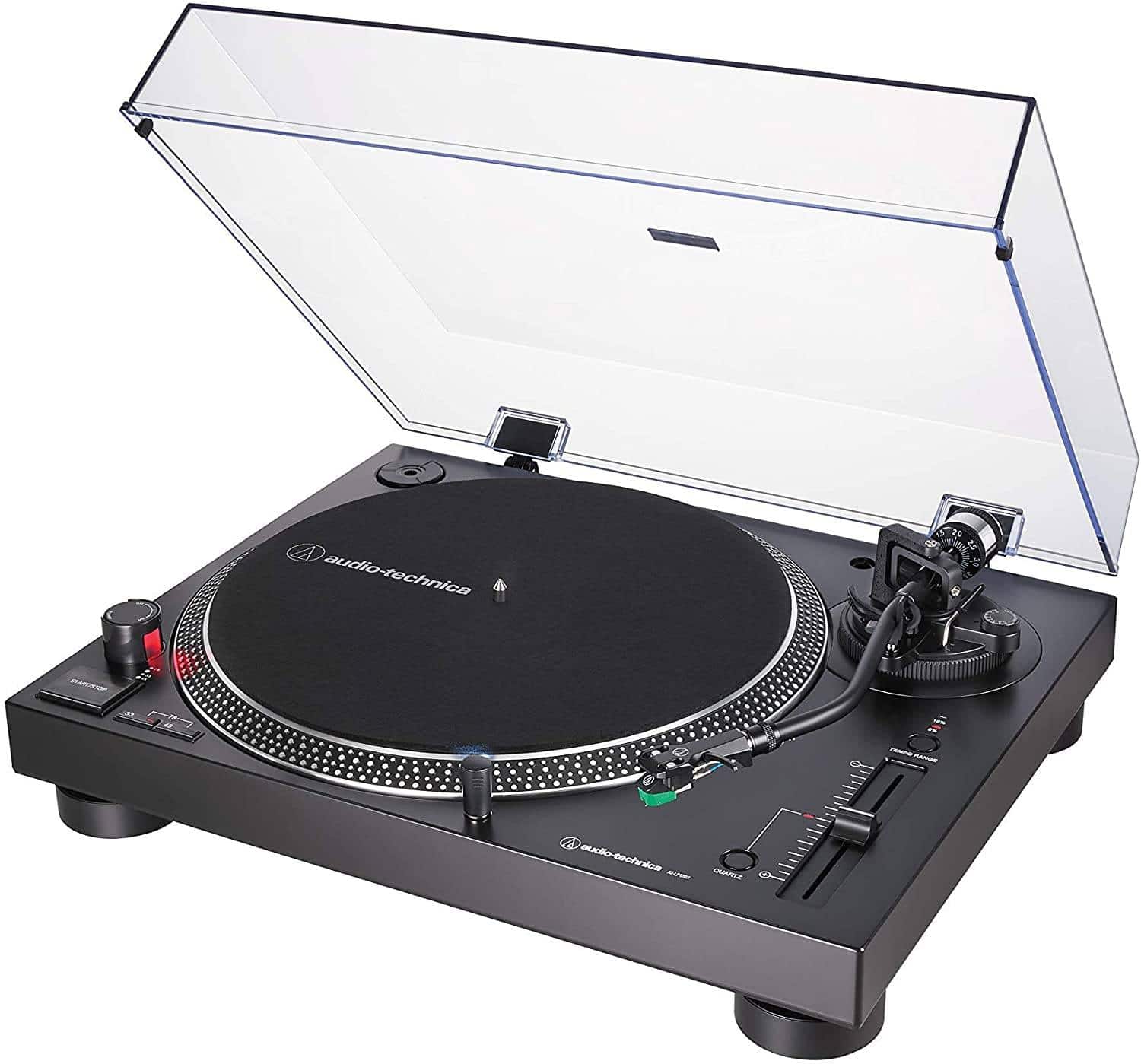
The latest iteration of the 120 turntable, Audio-Technica has made several tweaks to the AT-LP120XUSB design. Paul Rigby checks out the 120x and compares it to the competition
For me, at any rate, the new version of the Audio-Technica AT-LP120XUSB (or 120x for short) turntable snuck under the radar. There have been changes to the older version. Some of them welcome, others less so.
I’ll give you a quick overview of the design and my impressions of the same and then I’ll give you a more formal parts run down.
Firstly, the AT-LP120XUSB features a new DC servo direct-drive motor, the phono amplifier has been “improved” along with the area around the base of the tonearm. The headshell has also received attention.
Audio-Technica has decided to change the 120’s focus. Hence, the 120 is no longer a useful DJ tool. You could get by using it as a DJ deck sure but there are better options out there. The 120 might give you a lot of the DJ furniture but there is no reverse option, the 120x is not as robust or as heavy as it once was (it’s lost a couple of ‘kg’ from the previous model) so it won’t survive a club environment for very long (while bass promises now to be a lot lighter too) and the included AT-VM95E cartridge will die a terrible death if you wanted to use it for scratching.
The motor has also been reduced in torque which wold hamper DJ-related performance but this is actually a good thing in sonic terms. The higher the torque, the more energy a motor will insert into the platter and the plinth and that energy has to go somewhere. If it’s not immediately drained, then it will convert from vibration to high-frequency noise and start veiling fine detail. Not a good thing. Hence, lowering the torque is on the right lines, at any rate.
SEEING THE LIGHT
So the 120 is not strictly a DJ turntable, although you could muddle through with it for DJ purposes. I class the 120x as a lifestyle turntable. By that I mean that it’s not wholly dedicated to sound quality. Part of its build budget has been used to buy parts which have nothing at all do do with sound quality.
Examples of that can be found in the remaining Technics-eque design chic. The dual on/off and speed controls, the pitch slider, the tempo range button and the cheap-looking and rather bizarre cueing light.
If the 120 is not a DJ deck why go to the trouble of including it at all? If you’re going to include it to enhance the Technics aesthetic why not include the traditional light design instead of a plug-in job that connects via a RCA socket? Including it actually ruins the lines of the turntable. And why use that blazingly stark white light which threatened to give me an instant migraine when activated? The removal option might be useful in terms of maintenance but, while in place, it looks awkward and clumsy. Here’s an image of the original pop-up light design…
…and the new replacement. I know which one I prefer.
I would have dumped the light, ripped out the socket and used the extra cash to enhance the sound quality. Adding damping to the paper-thin platter would have been a good option.
So much for my design thoughts. The front left of the plinth provides the usual Technics-like power, start/stop and speed switches. That’s three speeds because 78rpm is catered for.
To the right are the Quartz and Tempo Range buttons plus pitch slider. Around the back, it’s good to see that you can supply your own phono cables via a pair of RCA sockets plus Ground grub screw. There’s a barrel-type connector for the switch mode power supply plus a USB socket for vinyl ‘ripping’ to a digital file (a web address is included for you to download appropriate, free software from Audacity) and the controls for the built-in phono amplifier. You can override the built-in option and use an external phono amplifier if you wish.
A felt mat is included – something I much prefer to the terrible moulded rubber options you often see at this price point – plus a hinged lid.
Hanging off the end of the tonearm is that VM95E cartridge I alluded to above. It holds a welcome elliptical stylus. I also much prefer the newer VM95E to the older AT95E in terms of detail extraction and clarity. The cartridge and its headshell are held in place via a classic SME-type connector to the tonearm via a rotatable locking ring.
Spanning 452.0 × 352 x 141.6mm, the 120x weighs in at 8kg.
A FEW NOTES
I initially wanted to compare the new 120x with the older 120 but was unable to grab one for this review. I asked Audio-Technica for a sample and you would have expected the company to have one available somewhere wouldn’t you? You would have thought that one would have been kept on, for old times sake. Sitting in a nearby closet, wedged under the stairs, acting as a door stop and keeping the fire door open or even being used part of a large scale game of Jengo. But no. Nothing.
Nevertheless, I wanted to compare the new 120x with comparably priced turntables. To see where it sits in sonic terms when compared to its immediate competition but also how the features compare at this price. I also wanted to decide where this turntable is targeted. Who is the customer?
I reviewed each turntable ‘out of the box’. Most people will buy a turntable and never touch it once it’s up and running. Any upgrades and tweaks will play havoc with the price point and once’s budget but also this overall review and its conclusions. I decided not to change the cartridge or swop in platter mats and isolation feet. I’ll leave that to the user or, in my case, to a later upgrade feature. There’s enough going on here by comparing the 120x to three competing turntables. Throwing in ancillary tweaks would not only potentially confuse the reader but would double the length of this review. I had to stop somewhere.
Except. Except for the phono cables. I had no choice here. Firstly, because three of the four turntables on view in this review allow you to plug in third party cables which means that none of them depended upon the supplied default cables and because, after a brief listen to those supplied ultra-cheapo cables, I realised that they were so bad, the cables imposed an instant bottle neck.
What does that mean? Well, reviewing the 120x with these in place would mean that I would not be reviewing the 120x, I’d in fact be reviewing the default cables. So out they went. In came a set of Pro-Ject Connect-IT E cables (£45) with a built-in Ground cable.
By all means use the default cables to begin with but see that area as your first upgrade, when funds allow.
Finally, this review is for people who have a budget up to £250 – give or take a pound or two – not £350 or £500. I wanted to maintain strict parameters to again, not let the review run away with itself but also to provide some definite buyer’s advice for those on that strict budget.
SOUND QUALITY
To begin I began with an orchestral piece plus voices from Ennio Morricone. This is a relatively obscure release on Cinevox from the film, Metti, One Sera a Cena. It’s also beautifully melodic and a hidden gem in soundtrack terms (most of the man’s work is under the ‘hidden gem’ label). So we have sweeping strings, female vocals, close mic’d percussion, brass, acoustic strings, glockenspiel, triangle, acoustic and electric piano and more.
I quickly tried the built-in phono amplifier which was fine. Nothing special but okay for those who have spent all of their cash on the 120x and no extra cash for external phono amplifier. In such circumstances, the internal model will do for now but grab an external model as soon as you can to enhance sound quality.
From this point onwards I plugged the 120x into an external phono amplifier for sound testing.
I firstly compared the 120x with a lower cost design, just to see how the 120x coped with a Chinese-designed outing. In this case, the Lenco L-3808 direct drive turntable. A design I like a lot, for the cash. Mainly because of its direct drive motor which keep the Lenco’s sonic head above water.
In this sort of company, the quality from the 120x was quickly evident. What immediately struck me was how much more relaxed everyone sounded through the 120x. The female vocal had a rather tense presentation via the Lenco but sound like she had not a care in the world via the 120x. Similarly, the strings swept along the rear of the soundstage in a more relaxed manner. Gliding, they were.
Another point from the vocal presentation too which offers more emotion. There was a definite sense of vulnerability from this vocal. A slight wavering at times that the 120x was better able to translate.
This was helped by an infusion of air and space across the entire soundstage which helped to open up the music while providing a more organic feel to the shy bass guitar and a sense of focus around the ride cymbal.
The acoustic guitar also had a tonal realism that was largely absent via the Lenco. I was able to hear more of the bite of the guitar strums via the 120x too. That initial downward action of the hand during the strumming sequence that gives each strum a sense of attack was better translated around the upper mids from the 120x.
What bass existed around this track was also more precise and honed.
Given a choice then between the 120x and the cheaper Lenco, I would try to save my pennies and buy the 120x instead.
FLUANCE RT81
Next? The Fluance RT81. The RT81 was a tougher challenge as it offered the same cartridge, a heavier plinth and a technology choice of belt drive instead of the direct drive motor. It was also easy to use, easier in fact because the 120x’s dual control on/off and speed selection switches are reduced to one combined knob on the Fluance. It’s also easier to connect the phono cables to the rear of the Fluance because the rear of the 120x’s plinth has an overhang which restricts access to the 120x’s sockets and switches.
In terms of sound, the comparison is intriguing. I would say that, in relation to the 120x, the Fluance is a tad warmer, a little bit sweeter than the 120x and for some that will be immensely attractive. In fact, I did enjoy the listening experience from the Fluance. It is packed with information, lots of detail and provides an attractive tonal balance around the soundstage. That is, the upper and lower frequencies exist in a sonic harmony so music sounds at ease, relaxed and very approachable.
The 120x is more realistic, though. The 120x adds far more space and air in the soundstage and the upper mids provide extended dynamic reach. In fact, the dynamic range from the 120x is extended either end with bass being both organic but more precise.
I mentioned that acoustic guitar strum bite and the raft of information around that simple motion. There was much more information around this area from the 120x. The Fluance nodded towards the acoustic guitar strums but never dwelt upon it so it held less importance in the mix. The 120x wanted you to hear it and feel its significance. The same should be said of the later cymbal taps which offered greater delicacy and fragility via the 120x.
Although I could easily listen to the Fluance RT81 and would enjoy an afternoon’s playback from its slightly warming presentation, for accuracy and realism, the 120x was the preferred choice.
REGA RP1
Which left the Rega RP1. Let’s not forget that Rega is offering a turntable here for around the same price as the 120x but without the built-in phono amp, without the built-in USB port and without the DJ-esque features like the plug-in light and Technics-a-like furniture like the controls and tempo slider. All of that is dumped by the Rega in favour of, well, in favour of the tonearm. That’s where the money has gone because the Rega actually uses an inferior cartridge to the 120x while the rest of the build is stripped and basic. So the build philosophies here are poles apart.
What the Rega gives you is much lower high-frequency noise, so the soundstage is far quieter. This means that shy and delicate detail is more easily accessed via the ear. Instruments like the cymbals, the triangle, much of the acoustic guitar plus the vocals have a tonal realism that far exceeds the capabilities of the 120x. In terms of tonal realism and organic playback, especially in the upper frequencies, the RP1 is the superior of the two.
The Rega doesn’t have it all its own way though because the 120x does well around the lower frequencies, both in bass terms but also the lower end of the mids. The bass guitar provided more presence from the 120x while the aggression in the acoustic guitar strums where better appreciated via the 120x.
Moving to more dynamic fare now, I played Substance from Joy Division and thoroughly enjoyed how the 120x tackled this high-energy outing. The big drum sounds infused the music with a blistering rhythm and under-pinned the album with a driving beat. The lead guitar, meanwhile ranged and screamed and conveyed the soul of the music very well indeed.
The direct drive’s capability to add a sense of focus and precision in and around the lower frequencies helped the music to move along at a fair old clip. At no time did it every drag or feel stodgy. The 120x was there to encourage and push this album along. The result was a wholly infectious sonic experience. One that dared you not to leap from your chair and offer a few ‘Dad Moves’ around the listening room. I must say that I succumbed. My wife, who witnessed the event, is attending emergency therapy, Monday morning.
CONCLUSION
Let’s not forget that all of these turntables have had – more or less, a little less with the Lenco – the same basic build budget. Each turntable has had to make choices in terms of how far it wanted to push part type and part quality. Each of the turntables I have featured here are nothing but a compromise. That’s what you get from budget turntables at this price point, compromise. The interesting part is to see or rather hear, how each company handles those compromises, each coping with their own type of build-budget pressures.
Rega, for example, has reduced the features list to almost zero. You get an on/off switch but that’s your lot. Changing speed even means moving the belt to a different notch on the pulley. Most of the build budget has gone into the development of the Rega tonearm – and a fine specimen it is too. In pure sonic terms, the Rega emerges as the best of the bunch, despite the 120x offering a couple of sonic highlights in comparison.
The Lenco’s compromise is a lower price point. That’s how it competes. It provides the same type of features as the 120x so something has got to give if that price is to be lowered. It’s parts quality and hence sound quality that ’gives’ and subsequently suffers.
The Fluance RT81 does provide a built-in phono amp but not a USB port. It does offer a semi-automatic play facility though and a belt driven motor instead of the direct drive affair. The RT81 justifies its build budget in a different way and offers an alternative sonic signature that some will find appealing. What it also offers the potential customer is choice. Something different from the 120x.
So, as the old saying goes, you pays your money and you takes your choice. For a £250 turntable, which compromise appeals most to you? Do you want a hardcore audiophile-type turntable as offered by the Rega or do you want a more featured-laden, rather friendlier approach to turntable design? If the latter is what you want and need then the Audio-Technica 120x is my own particular choice to fill that slot. For the price, this turntable offers a superb blend of features and sound quality and I don’t hesitate in recommending it.
AUDIO-TECHNICA AT-LP120XUSB TURNTABLE
Price: £250
Website: eu.audio-technica.com
GOOD: features, good overall sound quality, easy to use, Technics-like aesthetic
BAD: high-frequency noise, external light
RATING: 8
BUY FROM HERE:
EUROPE: https://amzn.to/2SCwuFH
REFERENCE
Rega RP1
Spendor S3/5R speakers
Tellurium Q cabling
Blue Horizon Professional Rack System
Harmonic Resolution Systems Noise Reduction Components

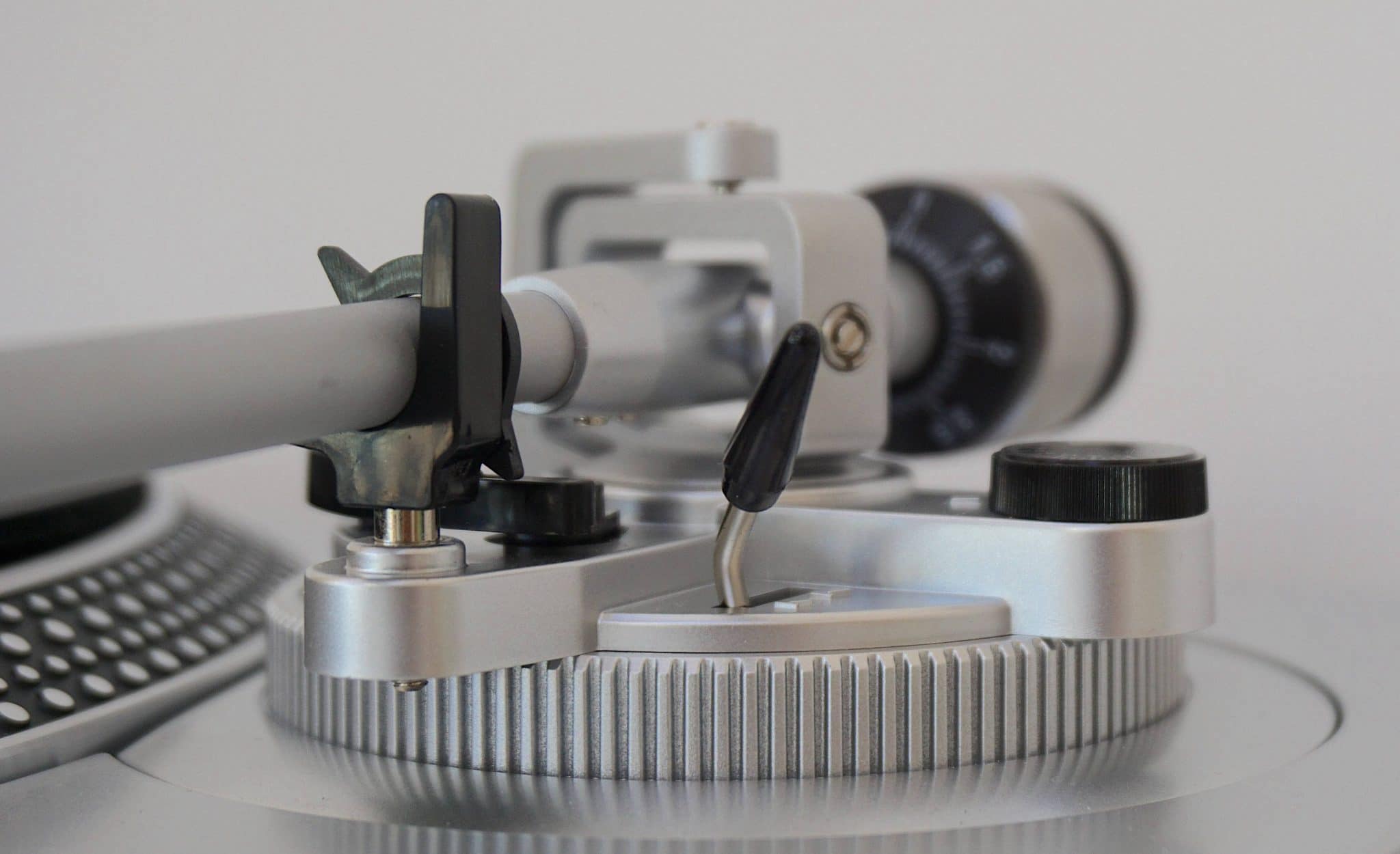
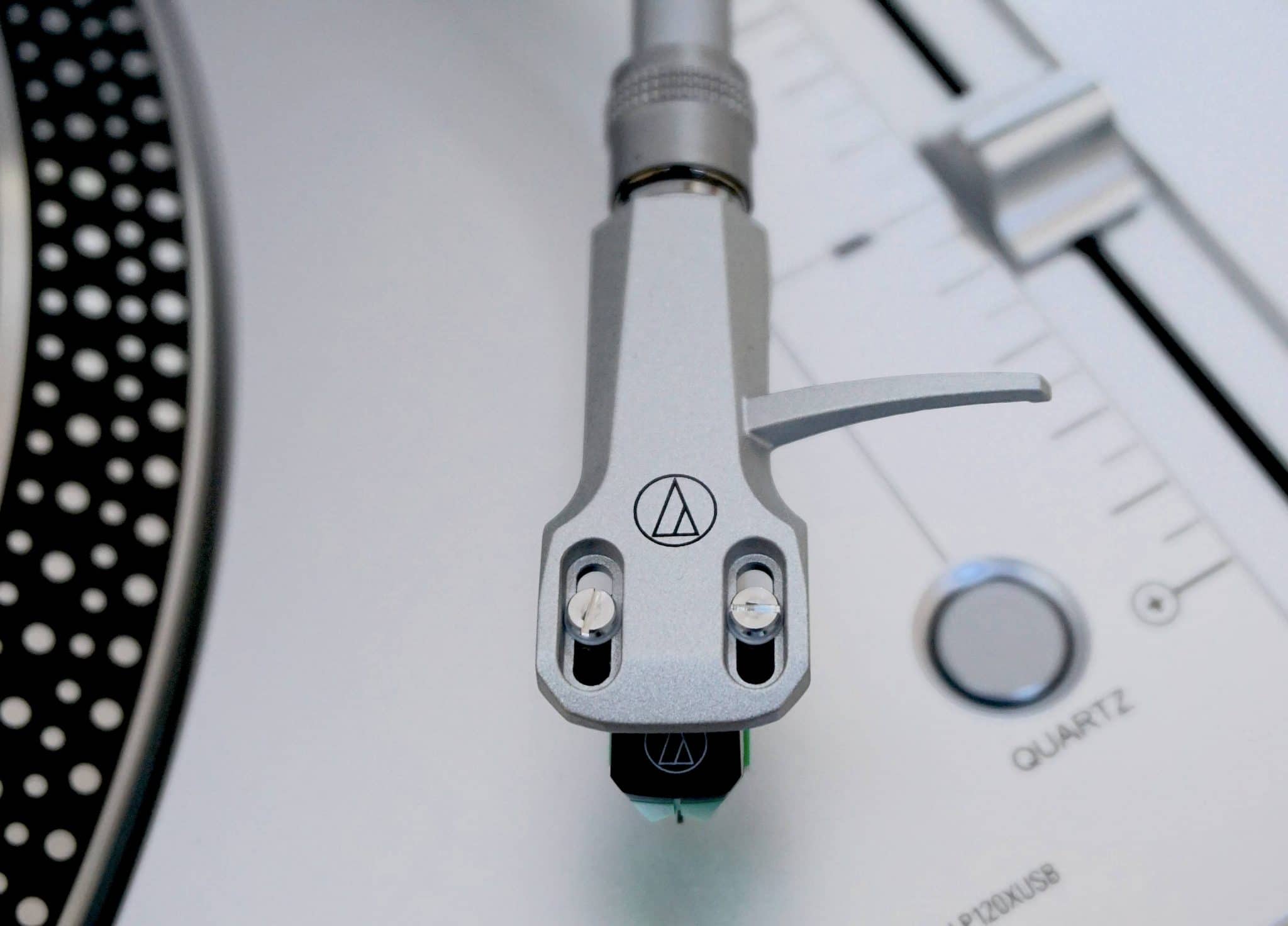
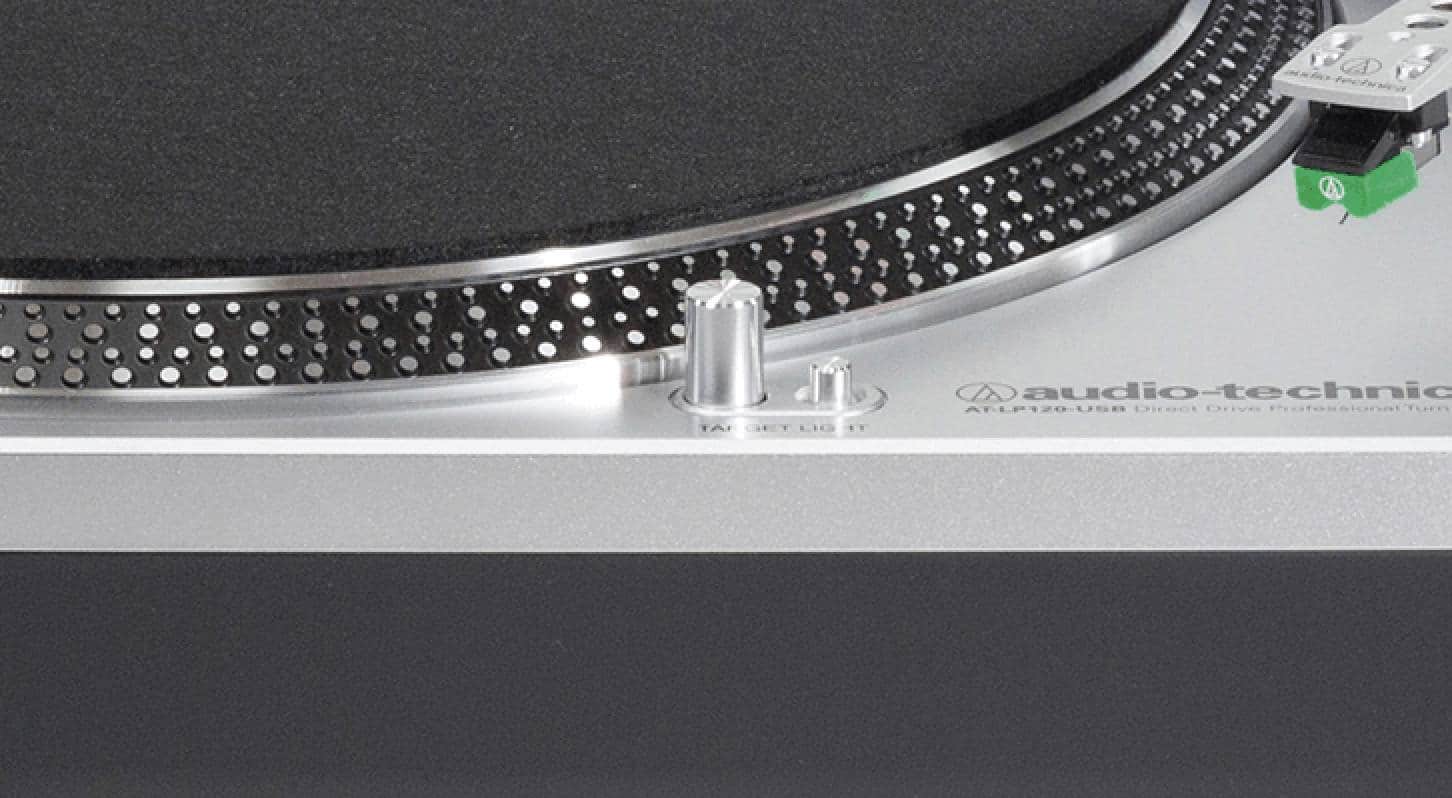
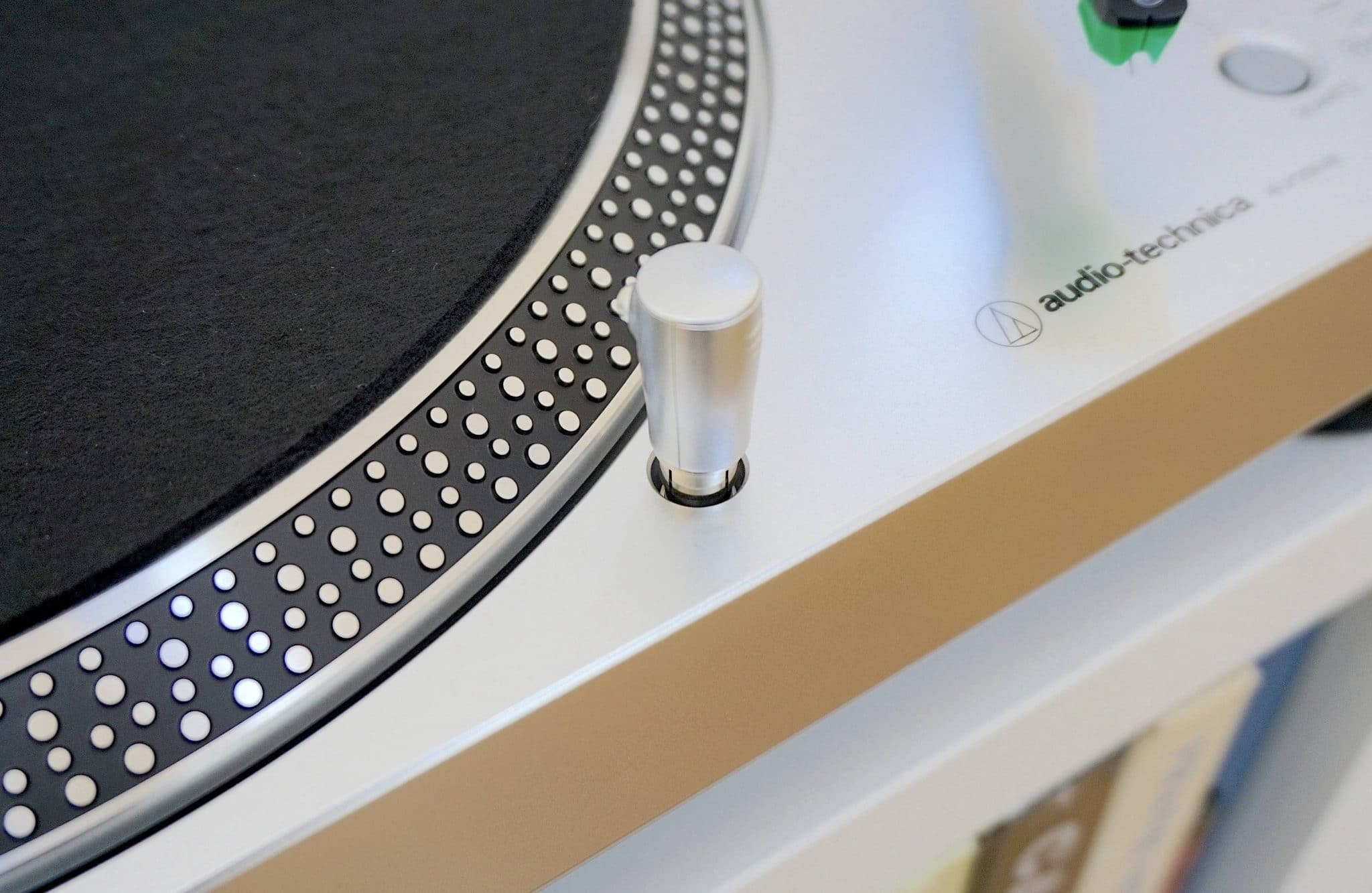
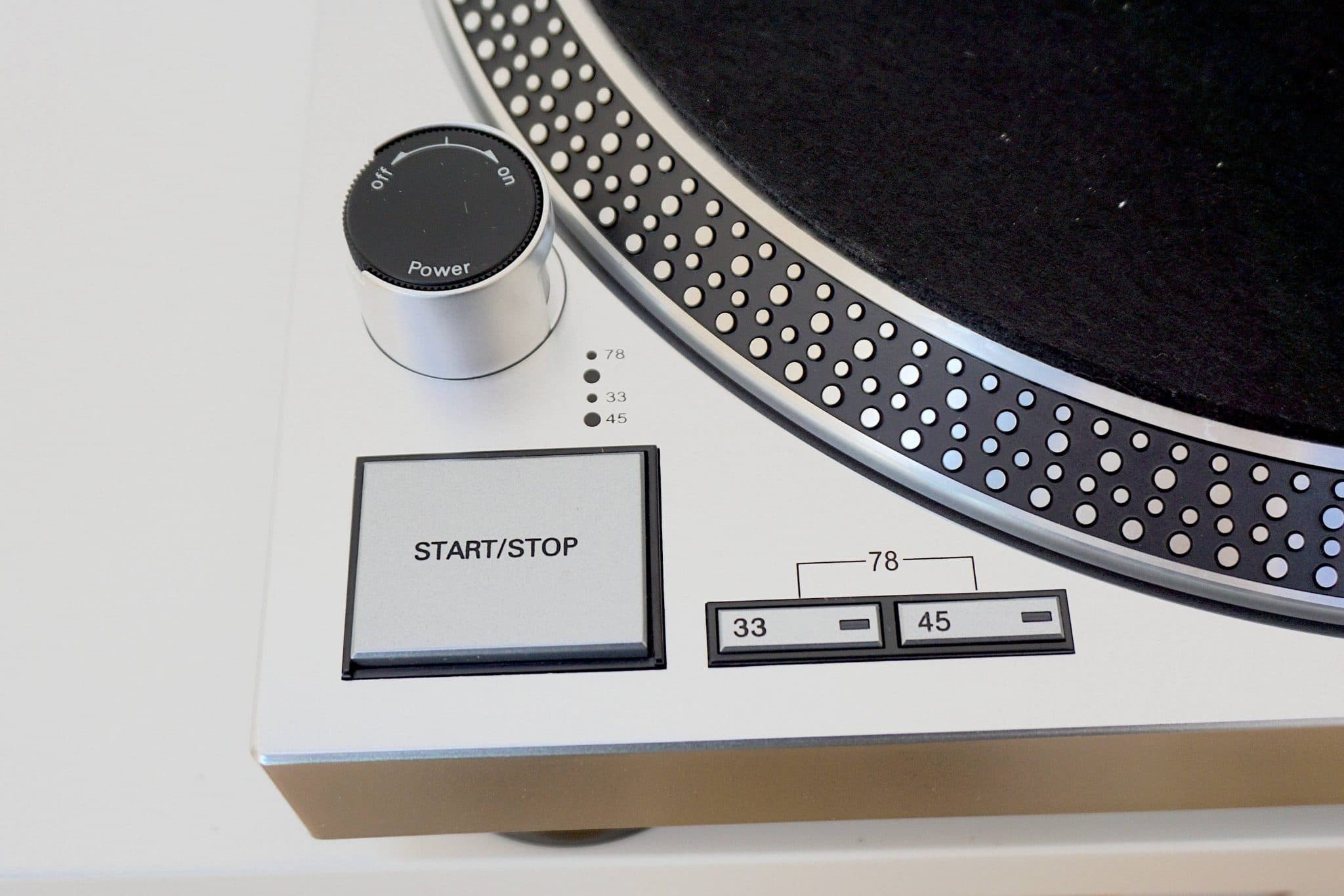
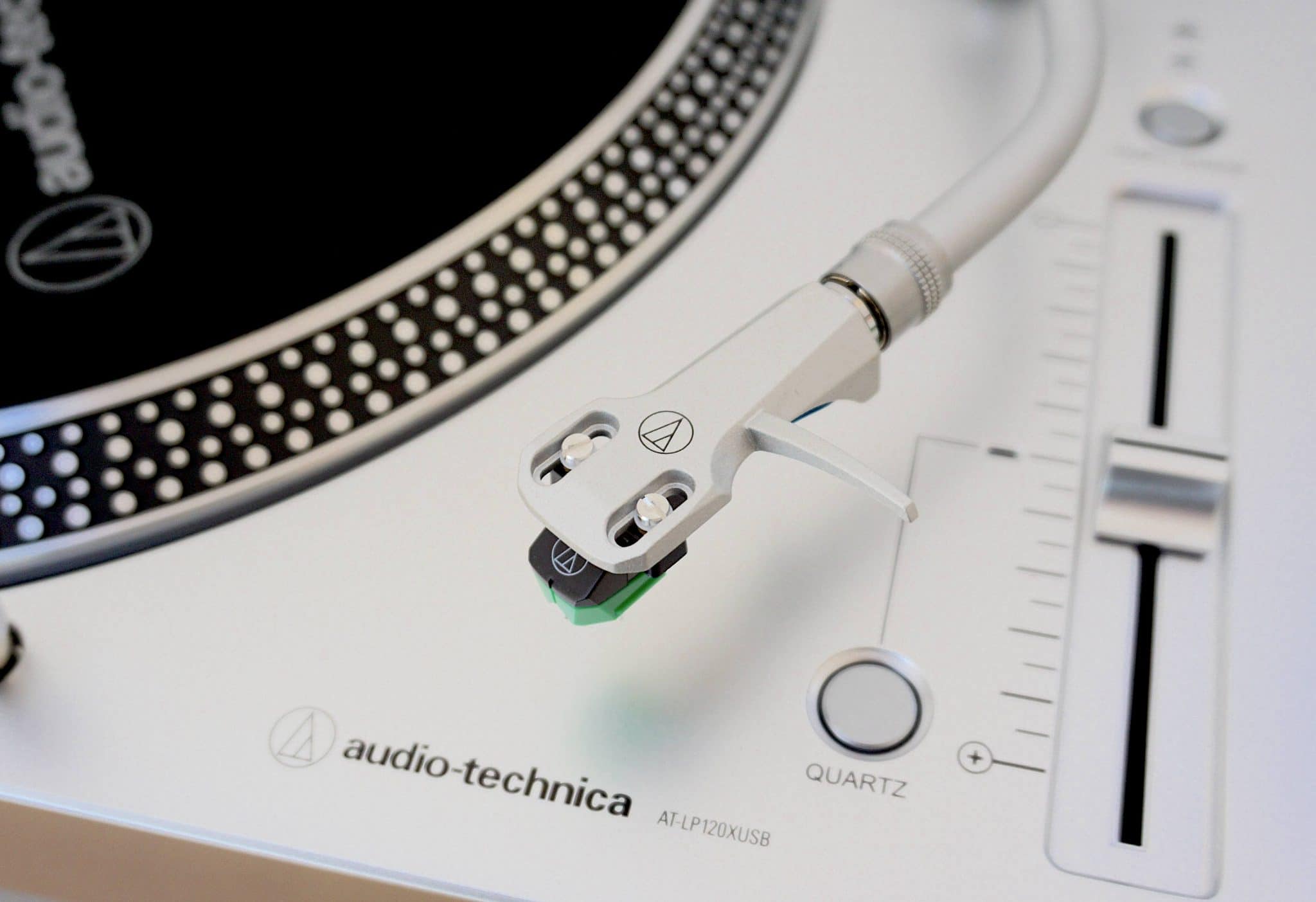
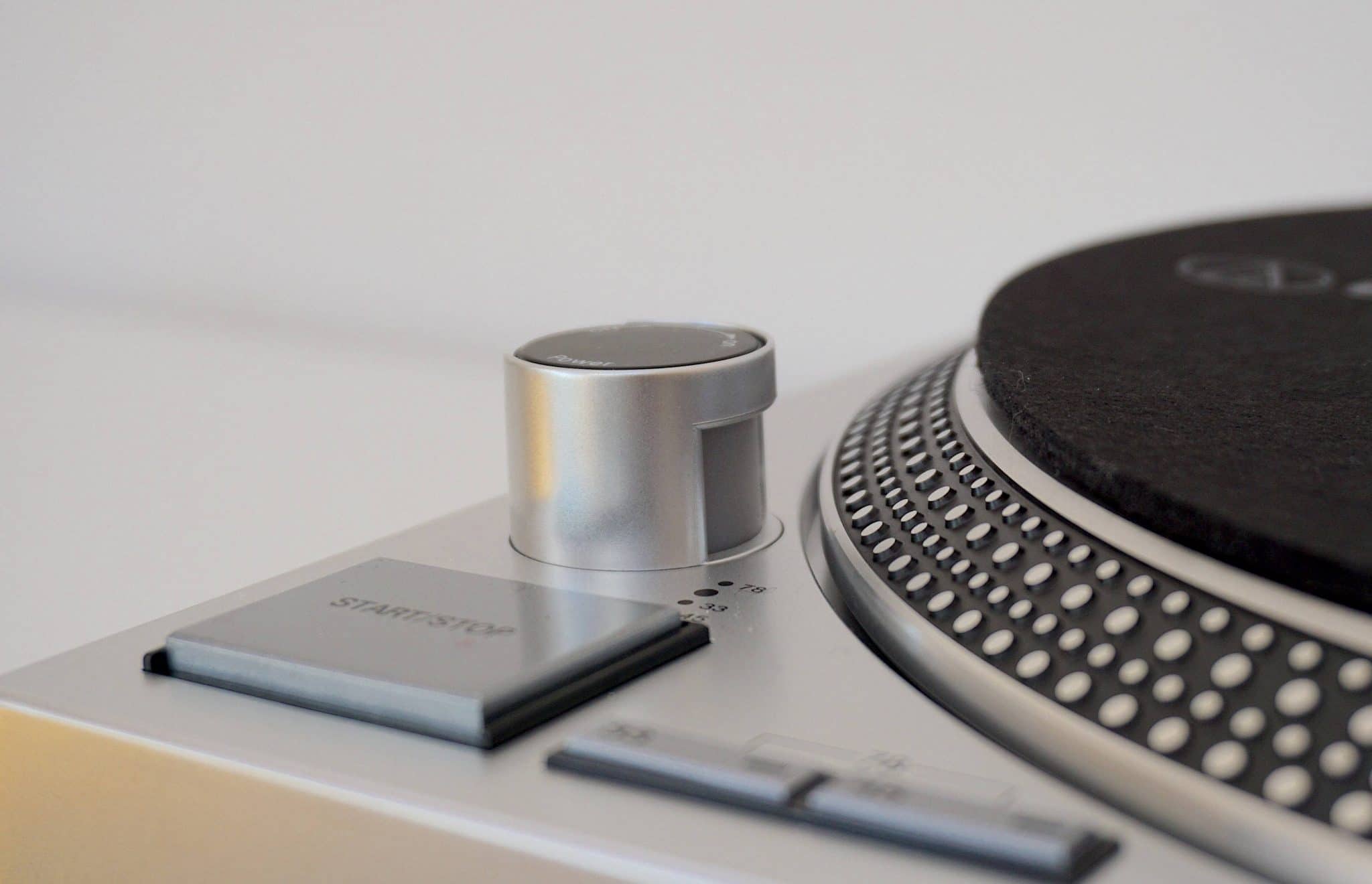
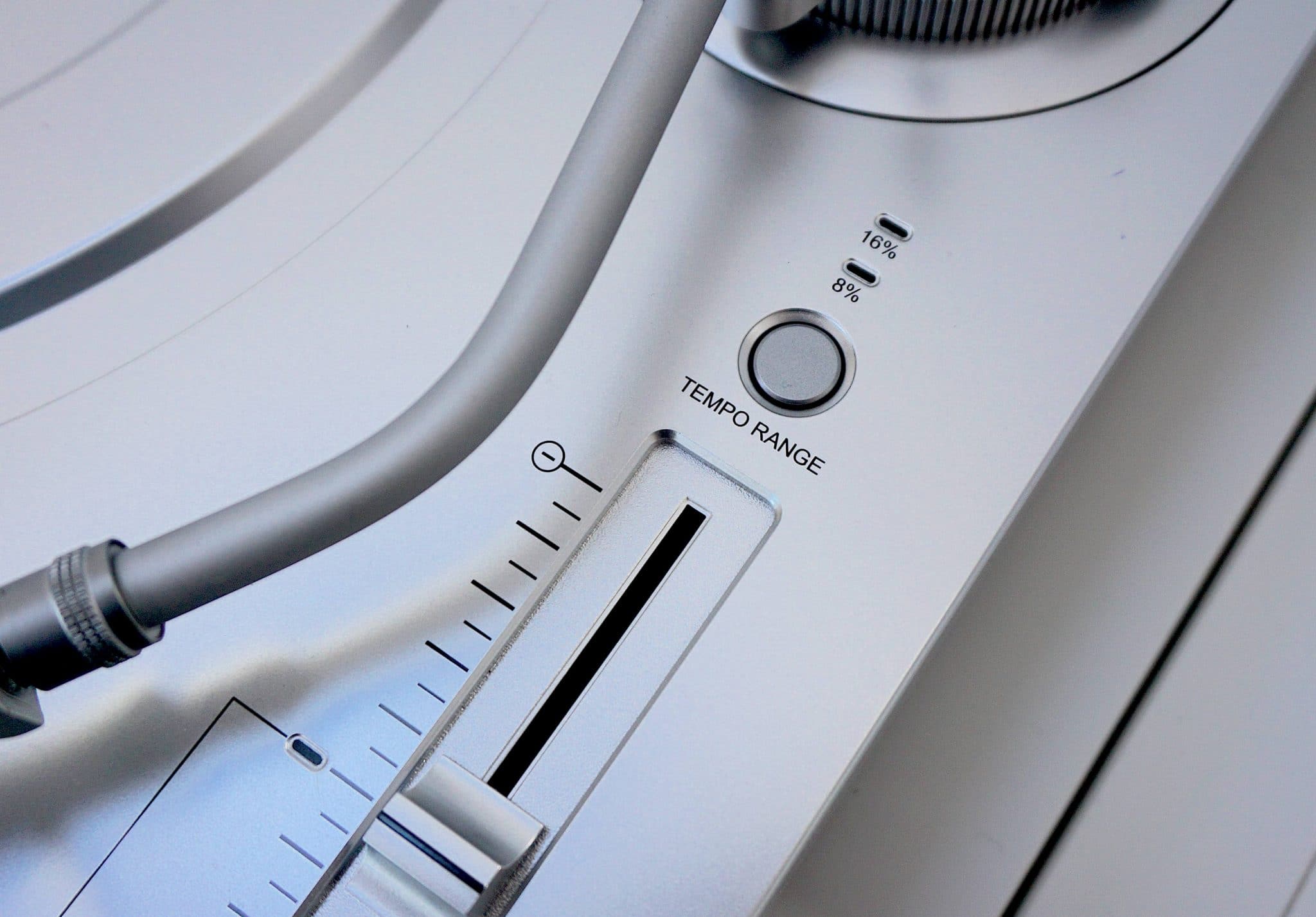
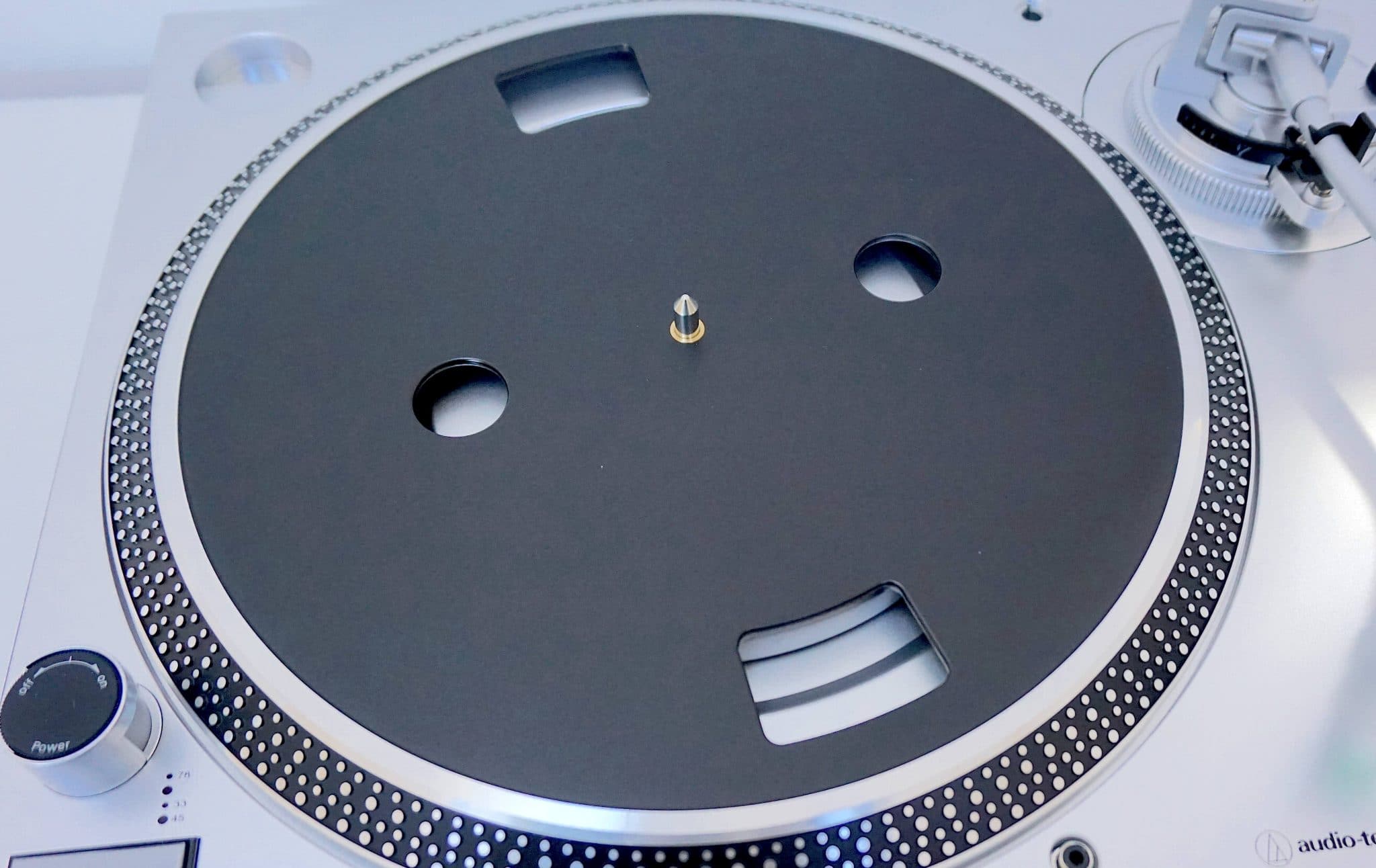
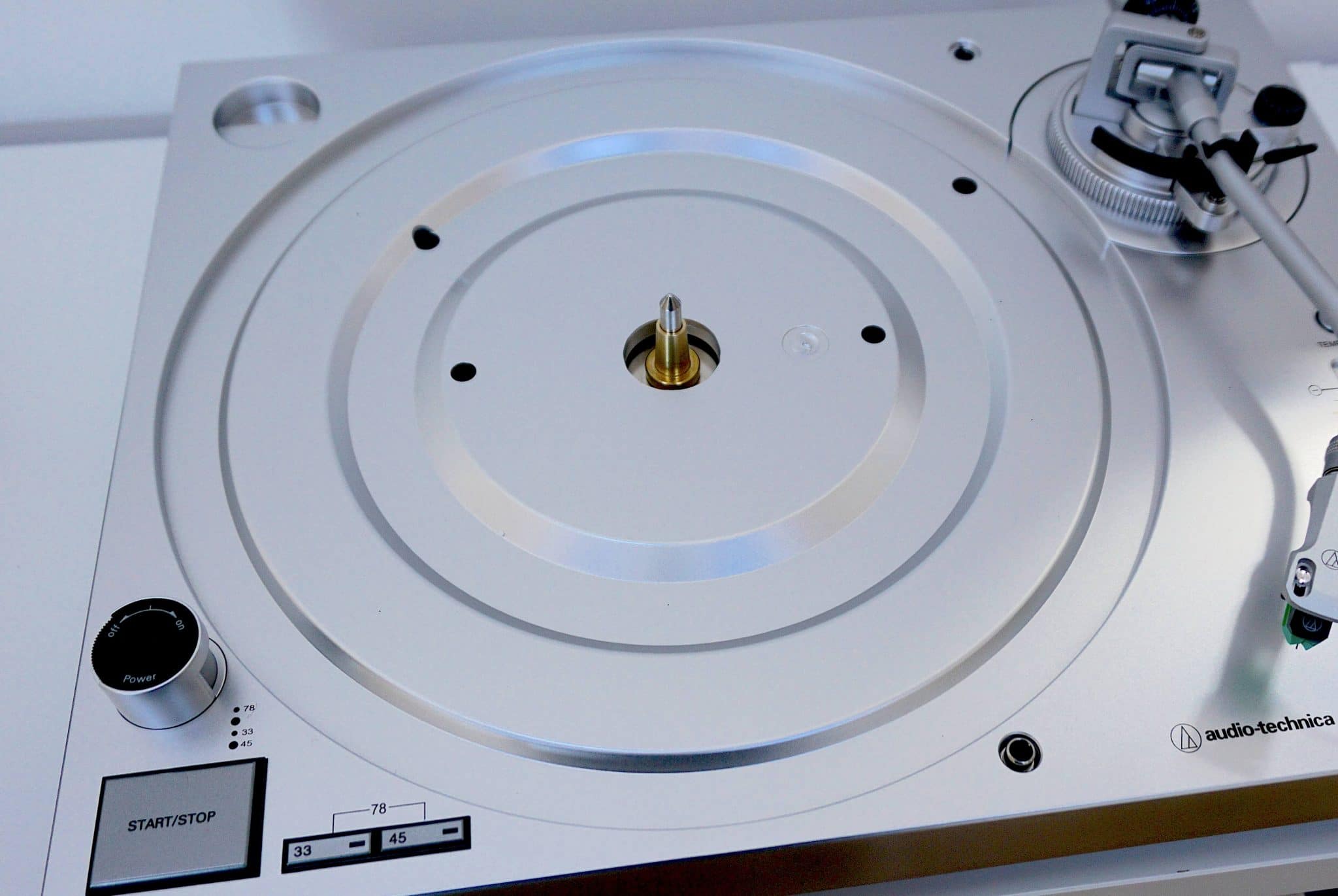
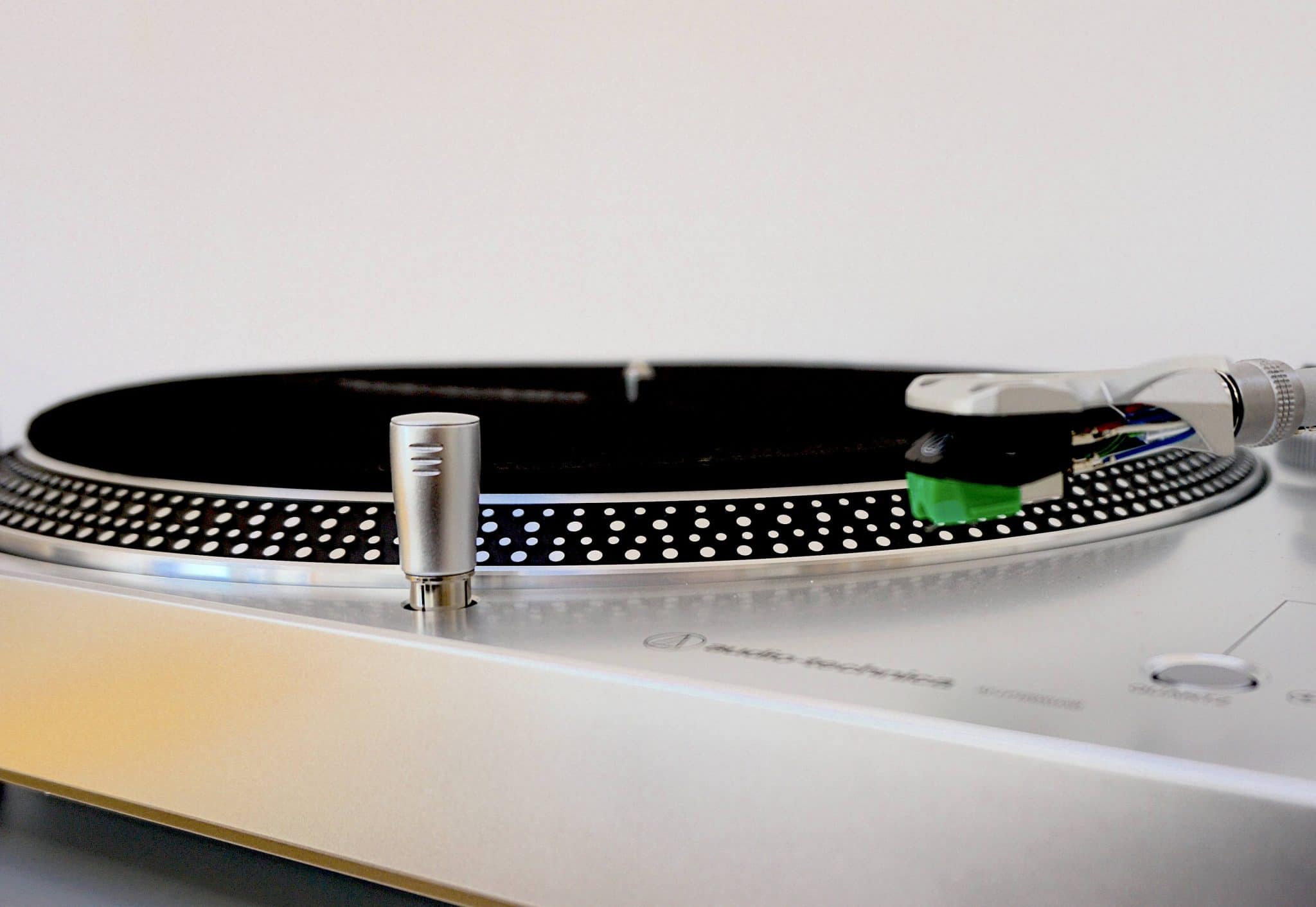
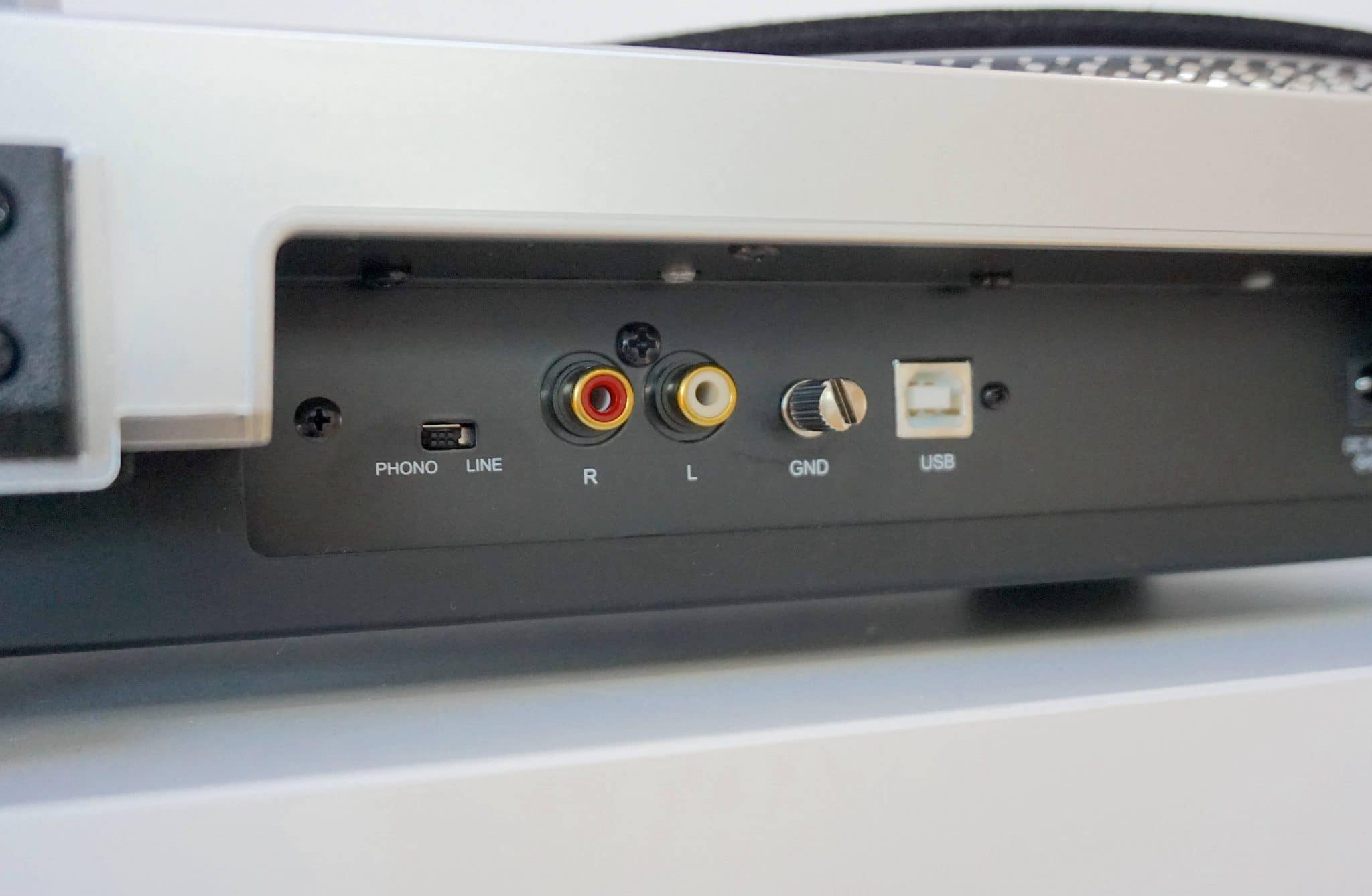
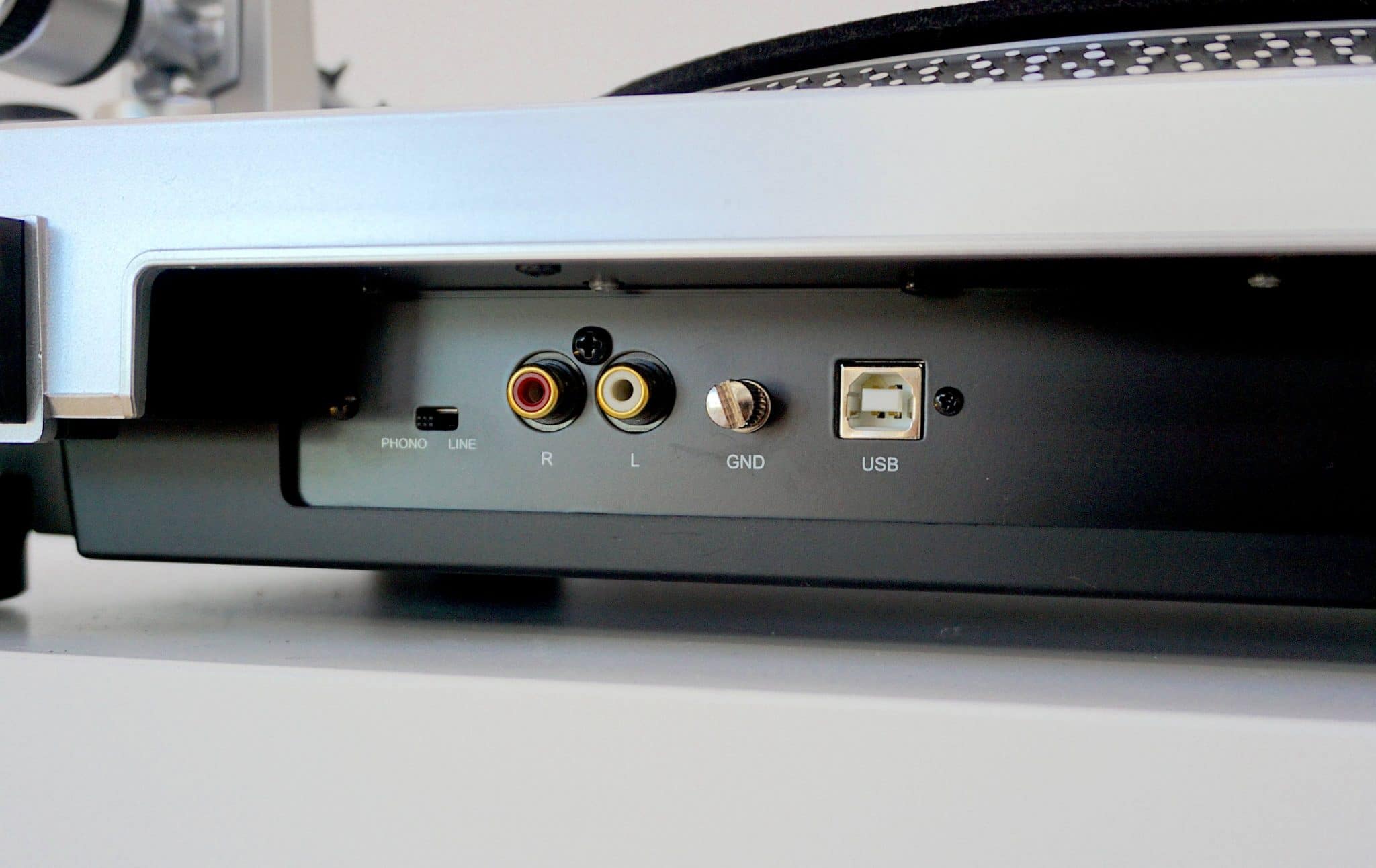
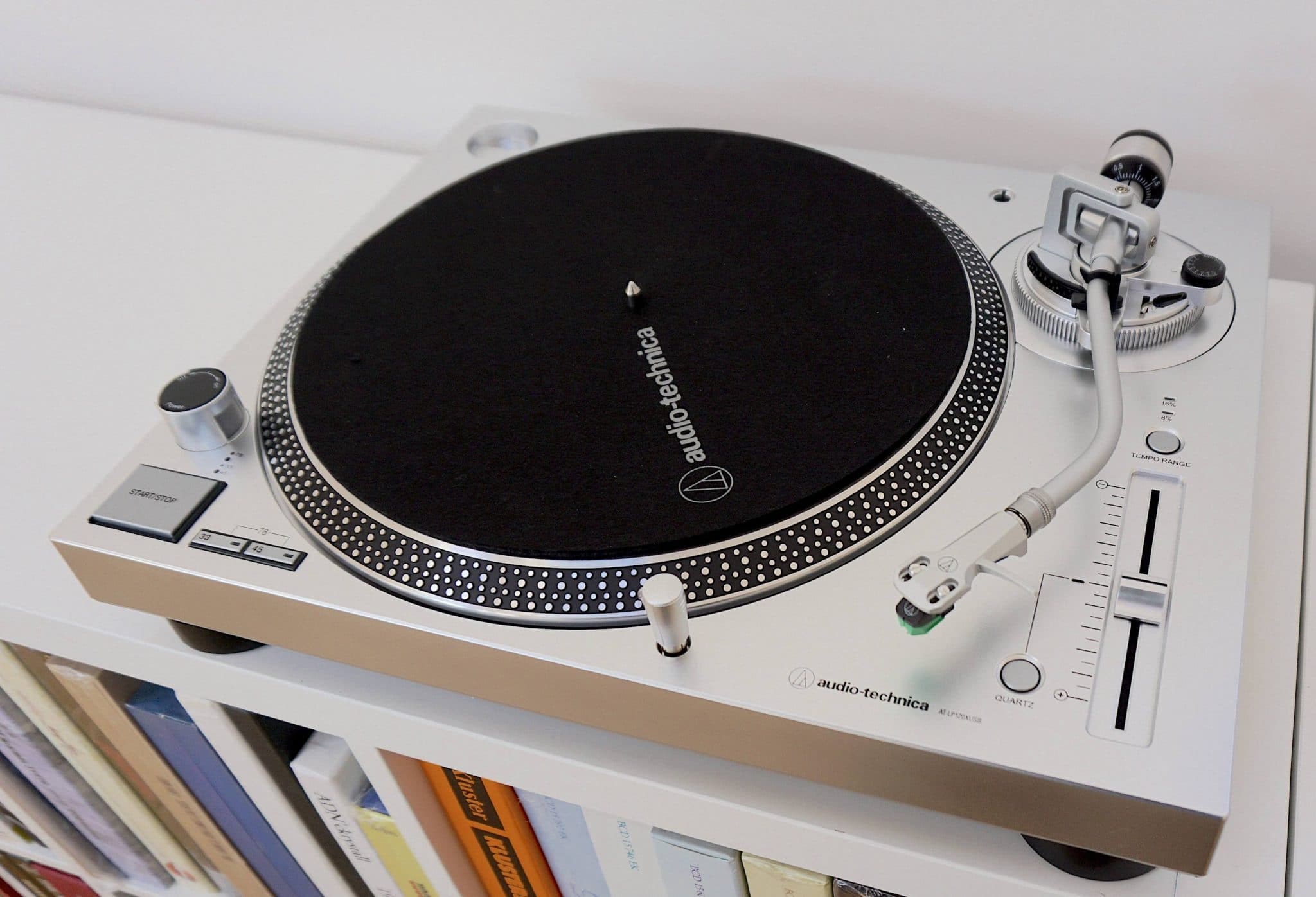
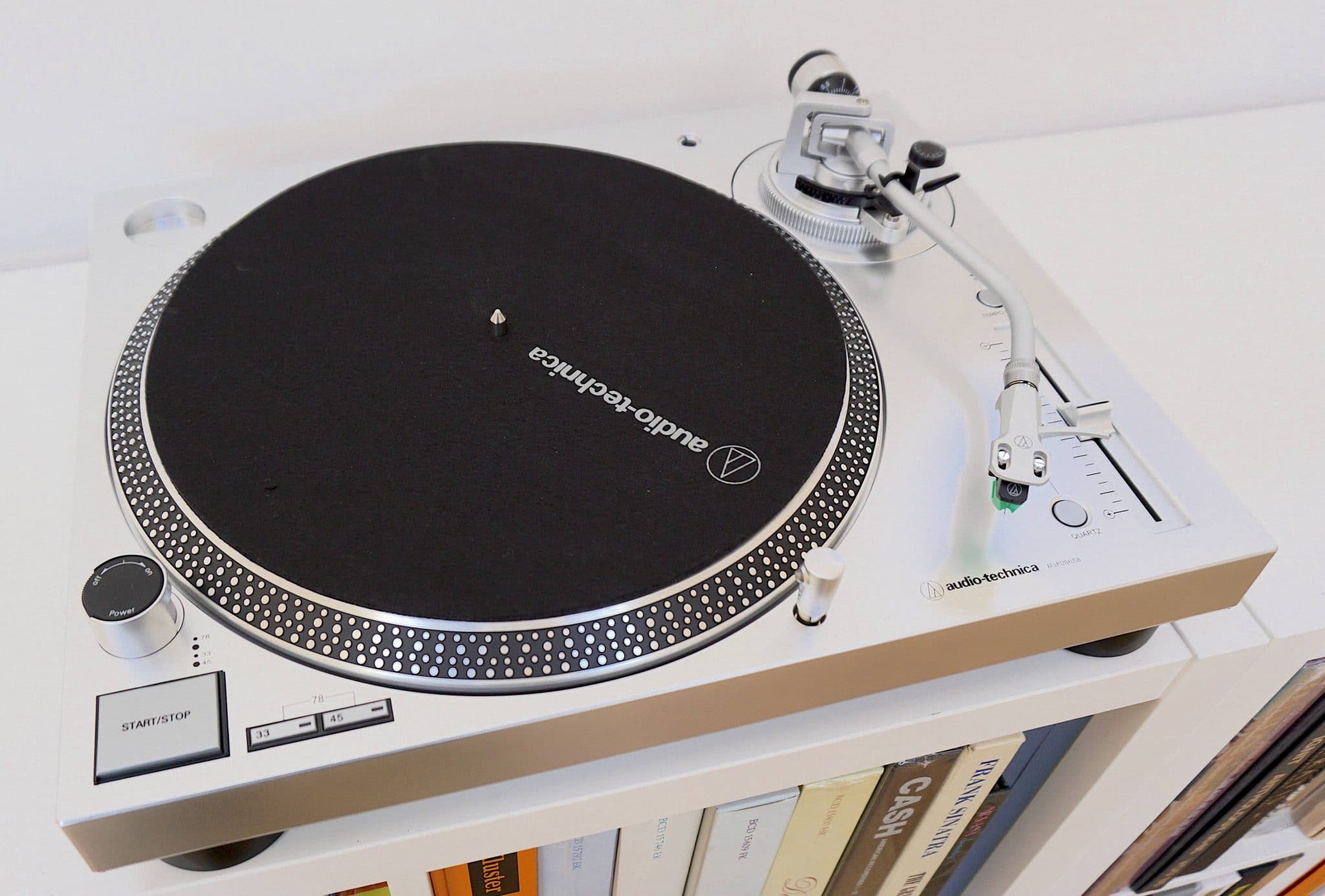

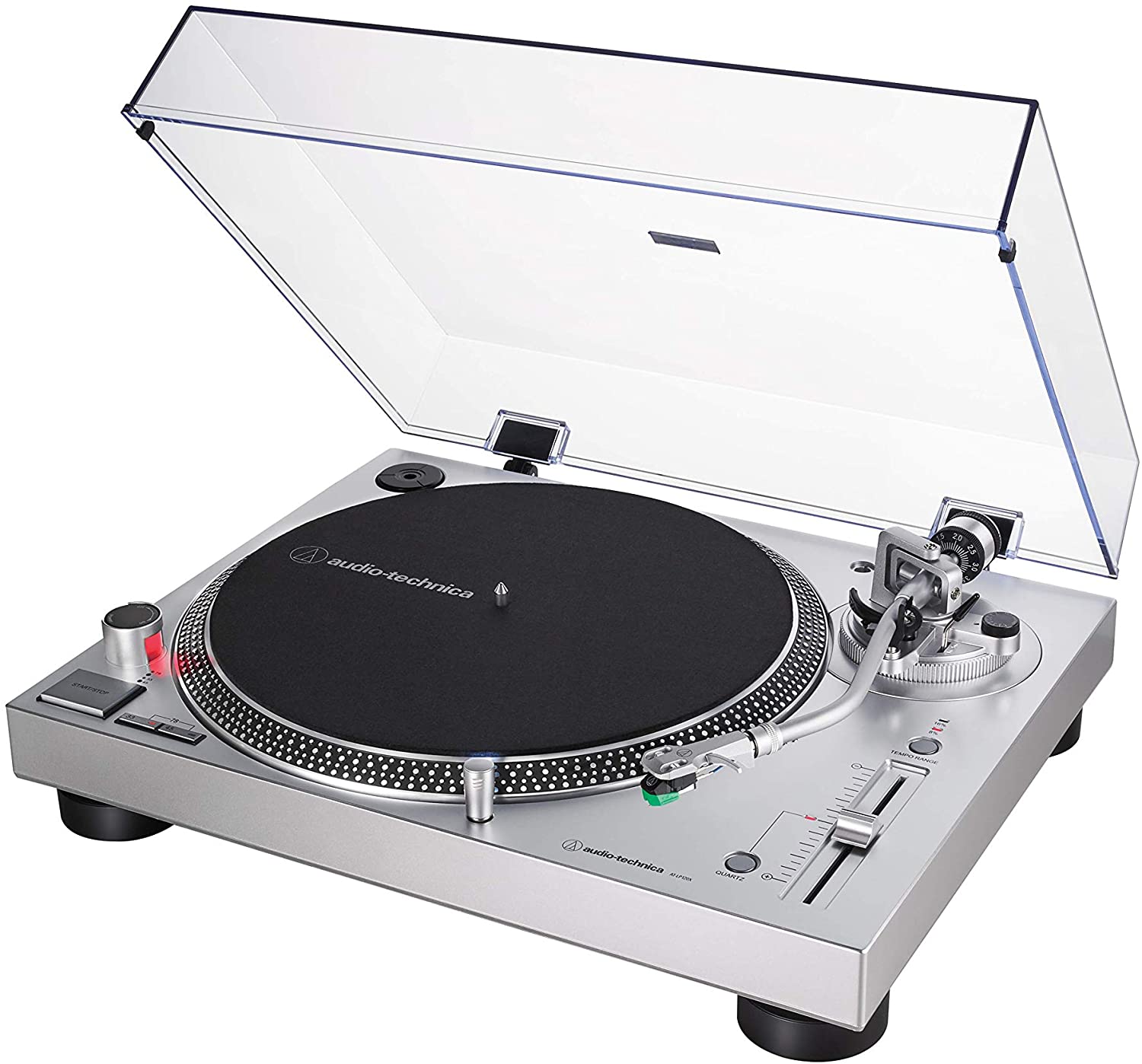


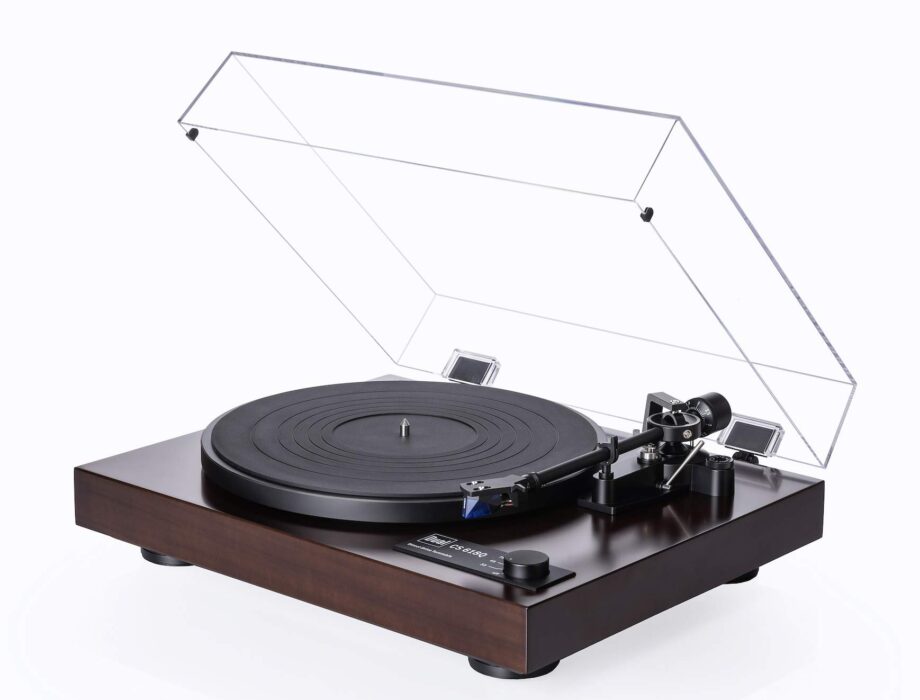
Hi Paul,
Got a good chuckle from your admission that “Substance” induced some Dad Dancing.
I have an ancient (2008-vintage) Audio Technica AT-PL120 (no USB, pre-“LP120” designation) with the default cartridge. Been thinking it’s time for an upgrade. The path of least resistance (to quote The Human League) would be to replace the headshell/cartridge with an VM540ML/H combo. Been reading good reviews of it in various places.
Of course at US $289 it brings up the question of why not just save up more pennies instead and migrate to something like the Pro-ject Debut Carbon EVO that you recently reviewed. (I’d prefer it if the EVO came with an Ortofon Blue instead of a Red.)
Do you have any opinion either way?
I’d listen to that little voice in your head, there Greg. It’s good advice. I’d go for the EVO and yep, upgrade the cart when you can. You see? You already had the answers 🙂 Let me know what you eventually decide.
Would replacing the Ortofon Red with a VM540ML/H be heresy? üòâ
I think my issue with going to a completely different turntable (besides “What do I do with the old A-T?”) is, there are so many choices once you decide to make that step! Pro-ject, A-T’s own LP3/5/7 line, Music Hall, Technics, Fluance, U-Turn, Rega … my head starts to spin. At one point I started to convince myself that a vintage Technics SL-MA1 (the low wow & flutter numbers!) was the way to go if I was gonna spend US $500 üòÅ #DownTheRabbitHole
For the EVO? Sure, that cart is certainly an option. Under ¬£500, I’d say they EVO is the best value option out there. And it offers upgrade/tweak potential. Above that figure the competition hots up but the EVO is certainly a fine performer below that.
Thanks Paul. Appreciate the time and the recommendation.
Hi Paul,
I just came across this review and I would very much appreciate your advice. I had this turntable for a few months now. I used to have the LP 120 version some years ago and then moved to Pro-Ject Debut Carbon with 2M Red catridge. I ended up adding the acrylic platter to that turntable and was happy with the sound. Until I tried to change the cartridge myself and ended up snapping one of connectors from one of the 4 wires. I then ended up purchasing this unit you reviewed here, AT LP-120X with the stock AT95e cartridge. I guess I forgot how easy was to change cartridges on turntables with S shaped arms. I ended up upgrading that stock cartridge to VM540ML. And here is my quetsion. I believe I am not getting the best ouf of that cartridge on this turntable. So which turntable would you recommend with S shaped tonearm, that would be an upgrade to this 120X turntable that would also help extract more out of my current AT-VM540ML cartridge? I don’t have a planned budget at this stage, I would just like to hear your recommendation on possible turntable upgrade.
The rest of my setup was somewhat based on one of your earlier recommendations:
Audiolab 6000A
Q Acoustics 3050i
Pro-Ject Phono Box S2
Thanks and cheers,
Mirza
Hi Mirza – this one would be the next step up: https://theaudiophileman.com/at-lp5x-turntable-review-audio-technica/
Hi Paul,
Thank you for replying. For some reason I can’t seem to find this model here in Australia. However I guess the next model, LP7 is available. Are you familiar with that model and what are your thoughts on that one?
Cheers
Hi Mirza – same here but different 🙂 We don’t have the LP7! So I’ve never been able to test it.
I have to admit, having worked in radio in my 20’s (I am 47 now) I used quite a few Technics SL-1200 turntables and I have to admit the Audio Technica LP-120xUSB appealed to a certain sense of nostalgia. Of course I approached this turn table with an open mind, after all it is over $1000 cheaper than the current Technics SL-1200, so how good could it be?
Performance wise I was quite pleased and surprised, however as far as the overall build, there were some sacrifices that had to be made in order for the LP 120x to have such a thrifty price tag. The feel of the buttons, the cueing smoothness (or lack there of) of the tone arm, the lightness of the platter and the overall feel of the plastic plinth is rather disappointing, especially as I compare it to my own Technics, a 1975 SL-1500 with it’s all metal plinth and heavy platter. However after I started actually using the 120x, all my objections quickly became of little importance.
Unlike your unit which for review purposes, you left stock, I replaced the felt Audio Technica mat with a much better cork mat as well as replacing the stock AT-VM95e cart with the upgraded AT-VM95ml micro line version. However like on yours, I am using a set of Project patch cords as I did not like the ones included. It is a quiet turntable, with great speed stability and I am currently using it as an archival unit (hence the other reason for the micro line cart) along with my old Technics SL-1500. Not sure how long this unit is going to last as there definitely some cost cutting measures apparent in the build, however with proper care, I hope to get some years out of it.
Hi Kevin – thanks for that. Glad you’re liking the 120x. It does offer good value for money and value is what this one is all about. Your upgrades sound fine to me too. And that’s another thing. There’s plenty of tweaking potential here. Glad you’re enjoying your music.
Liked the overall review. One question, I have loads of old 78 rpm records which are heavy of course and i assume that the AT-LP120XUSB can play them without changing cartridge etc?
You can but it would be better to use a 78 cart. Right tools for the job and all that.
Many thanks. Can you recommend a 78 cartridge for the AT-LP120XUSB?
Hi Paul
Take a look at this Audio-Technica page, you might wish to compare prices with those sold on Amazon, for example. If you don’t want installation hassles, you may wish to splurge out on a headhsell/cart combo so you can quickly ‘hot swap’ your current cart with the 78 and back again: https://www.audio-technica.com/en-gb/cartridges/best-for/78-shellac-sp?srsltid=AfmBOooOjKgHRK9wN-MDPoJpL3bOS_yh8bFPa8iX-eWIvTiXzh6gW_KZ